★★½
“Becalmed”
 My heart sank in the first few seconds, when I discovered that this was a SyFy Original Movie. The really poor CGI, of a ship sailing on the ocean, seemed to confirm that I was in for one of their bottom of the barrel productions. In the end, however, this was… just about okay. Incredibly derivative, to be sure, and that’s not its only problem. Yet it still just about sustained my interest. That’s certainly not always the case for SyFy Original Movies, to put it mildly.
My heart sank in the first few seconds, when I discovered that this was a SyFy Original Movie. The really poor CGI, of a ship sailing on the ocean, seemed to confirm that I was in for one of their bottom of the barrel productions. In the end, however, this was… just about okay. Incredibly derivative, to be sure, and that’s not its only problem. Yet it still just about sustained my interest. That’s certainly not always the case for SyFy Original Movies, to put it mildly.
This takes place almost entirely on the not-so-good ship Amphitrite, an eco-warrior vessel engaged in tracking illegal Chinese trawlers. Its engine breaks down, right in the path of an incoming storm. They then pick up a survivor out of the water, who turns out to be infected with… something. Which is why he’s telling the crew, “Kill me… Then kill yourselves.” Needless to say, they don’t quite follow his suggestion. Before you can say “Alien rip-off“, they’re moving slowly around the dimly-lit corridors of the ship in search of… something. And before you can say “Thing rip-off,” they’re watching video off the survivor’s phone, and getting paranoid about who among them might, or might not, be infected.
It’s an all-female crew, which is why the film is here, and it’s admirable that no-one explicitly mentions this or makes a fuss about it. They are what they are, seven women who are competent at their jobs – and of course, it’s a reflection of the all-male cast in John Carpenter’s The Thing. The problem is that there isn’t enough effort put into differentiating them, or establishing them as individuals. I’m not certain I could tell you most of their names, or identify them even with a particular characteristic. I’m going to guess the one called “Sparks” was the ship’s engineer. Otherwise, they seemed entirely interchangeable.
The other problem was already mentioned in passing: the remarkable lack of lighting. Look, I get that the ship “lost power”. I understand that your creature budget of 15 South African Rand probably can’t stand up to the harsh glare of daylight. But there is a limit to how much sloth-like meandering along corridors by near-candlelight I can tolerate. And this film reaches that quota inside the first 30 minutes, then keeps right on meandering. Inevitably, the dwindling band of survivors eventually figure out what exactly they are going to do, and how they are going to stop the creature from reaching the all-you-can-infect buffet which is civilization. To the movie’s credit, it doesn’t shy away from the downbeat conclusion of The Thing, though as appears inevitable with SyFy Original Movies, there’s a coda which leaves the door open to a sequel no-one wants or needs.
In the end, the problem is as always: if you steal from the best, you’ll be compared to the best. And Dead in the Water comes up short of The Thing and Alien, by the width of several oceans.
Dir: Sheldon Wilson
Star: Nikohl Boosheri, Christia Visser, Tanya Van Geaan, Bianca Simone Mannie





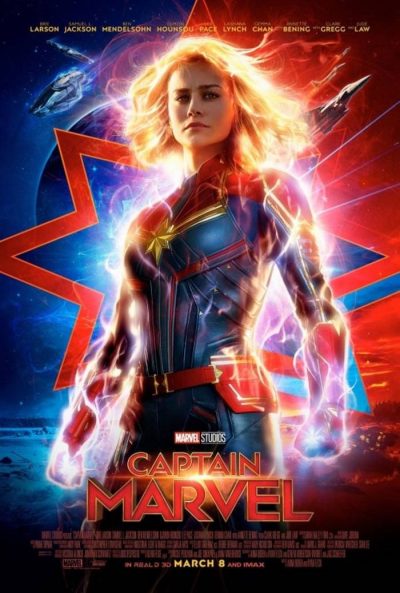 I had a couple of potential concerns going into this. Firstly, my general unfamiliarity with the Marvel Cinematic Universe. This was film #21 in their Infinity Saga. I had seen seven. Would this be like trying to follow Game of Thrones‘s penultimate episode, after having missed two-thirds of what preceded it? Secondly, Brie Larson’s press complaints about movie critics being “overwhelmingly white male.” Yep, guilty as charged, m’lord. Would this questionable attitude – that your skin colour and genital configuration matter more than what you do or say – carry over into the movie?
I had a couple of potential concerns going into this. Firstly, my general unfamiliarity with the Marvel Cinematic Universe. This was film #21 in their Infinity Saga. I had seen seven. Would this be like trying to follow Game of Thrones‘s penultimate episode, after having missed two-thirds of what preceded it? Secondly, Brie Larson’s press complaints about movie critics being “overwhelmingly white male.” Yep, guilty as charged, m’lord. Would this questionable attitude – that your skin colour and genital configuration matter more than what you do or say – carry over into the movie?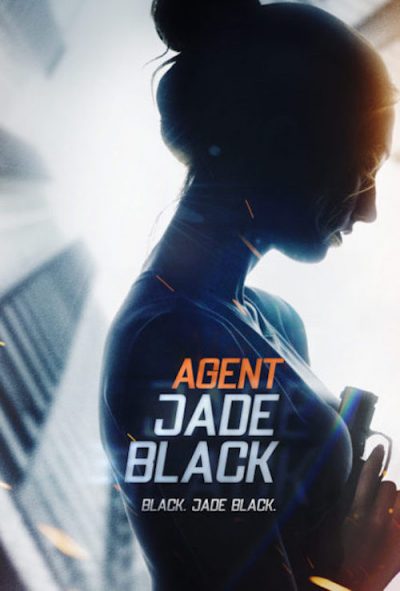 This originally was going to be included in my preview for the year, since it showed up in the IMDb with a release date of January 7, 2020. But on Googling, I found it already had seeped out on Tubi, a free movie channel. At time of writing, this would appear to be the first review written about it anywhere, though it should be considered less a preview than a dire advance warning. Indeed, I could condense the whole thing into one word: “Don’t.” For a more pedestrian, poorly-executed excuse for an action film, you’d be hard pushed to find. Right down to the initials of its lead character and the tag-line on the poster (right), this possesses aspirations it fails miserably to achieve. On the plus side, 2020 can really only go up from here.
This originally was going to be included in my preview for the year, since it showed up in the IMDb with a release date of January 7, 2020. But on Googling, I found it already had seeped out on Tubi, a free movie channel. At time of writing, this would appear to be the first review written about it anywhere, though it should be considered less a preview than a dire advance warning. Indeed, I could condense the whole thing into one word: “Don’t.” For a more pedestrian, poorly-executed excuse for an action film, you’d be hard pushed to find. Right down to the initials of its lead character and the tag-line on the poster (right), this possesses aspirations it fails miserably to achieve. On the plus side, 2020 can really only go up from here.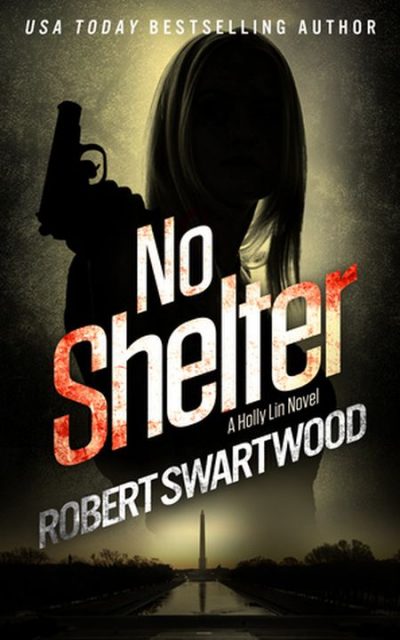 “Meet Holly Lin. Nanny by day, assassin by night.” That was the tagline here, and you’ll understand why it jumped off the Amazon page and onto my Kindle. I was expecting something like Mary Poppins crossed with Atomic Blonde [“A spoonful of C-4 helps the terrorists go down…”], which is a great concept. However, I guess I’m going to have to write that book myself, because this isn’t it. I suppose, technically it is, though may be closer to like “vaguely nannies some times, assassin at others”. It certainly helps in terms of workplace schedule flexibility, that she nannies for her government boss. So it’s apparently fine when she has to abandon her charges and jet off from Washington to Las Vegas to assassinate someone selling a flash drive, on which is… Well, we’ll get back to that.
“Meet Holly Lin. Nanny by day, assassin by night.” That was the tagline here, and you’ll understand why it jumped off the Amazon page and onto my Kindle. I was expecting something like Mary Poppins crossed with Atomic Blonde [“A spoonful of C-4 helps the terrorists go down…”], which is a great concept. However, I guess I’m going to have to write that book myself, because this isn’t it. I suppose, technically it is, though may be closer to like “vaguely nannies some times, assassin at others”. It certainly helps in terms of workplace schedule flexibility, that she nannies for her government boss. So it’s apparently fine when she has to abandon her charges and jet off from Washington to Las Vegas to assassinate someone selling a flash drive, on which is… Well, we’ll get back to that. Not unlike the saga of
Not unlike the saga of 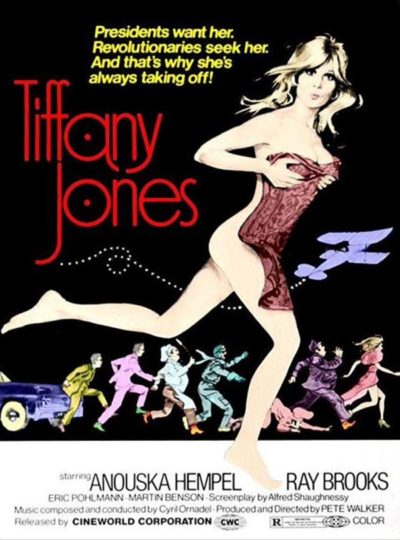 Fashion model Tiffany Jones (Hempel) finds herself dropped into the middle of international intrigue, after President Boris Jabal (Pohlmann), leader of the Eastern European state of Zirdana, takes a shine to her during a state visit to Britain. It’s supposed to be a trade negotiation, but is really to allow Jabal to broken an arms deal with some shady Americans. Her meeting the President brings her to the attention of two factions of Zirdanian rebels.
Fashion model Tiffany Jones (Hempel) finds herself dropped into the middle of international intrigue, after President Boris Jabal (Pohlmann), leader of the Eastern European state of Zirdana, takes a shine to her during a state visit to Britain. It’s supposed to be a trade negotiation, but is really to allow Jabal to broken an arms deal with some shady Americans. Her meeting the President brings her to the attention of two factions of Zirdanian rebels. I wanted to like this more than I did: director Skiba is a veteran of the Arizona film scene, though his other film previously covered here,
I wanted to like this more than I did: director Skiba is a veteran of the Arizona film scene, though his other film previously covered here, 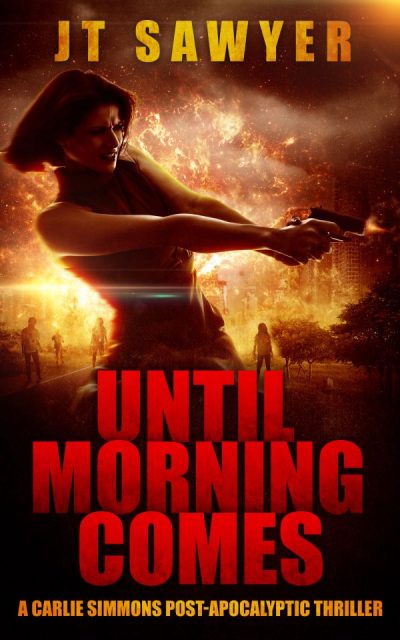 This omnibus edition contains the first three volumes in Sawyer’s post-apocalyptic story: Until Morning Comes, In Too Deep, and The Way Back. The central character is 31-year-old Secret Service agent Carlie Simmons, who is on secondment to Tucson, Arizona to provide protection for the President’s daughter, Eliza Huntington, who is attending university there. Things take a sudden wrong turn, with the outbreak of a fast-spreading infection, which turns its victims into psychotic flesh-eating ghouls.
This omnibus edition contains the first three volumes in Sawyer’s post-apocalyptic story: Until Morning Comes, In Too Deep, and The Way Back. The central character is 31-year-old Secret Service agent Carlie Simmons, who is on secondment to Tucson, Arizona to provide protection for the President’s daughter, Eliza Huntington, who is attending university there. Things take a sudden wrong turn, with the outbreak of a fast-spreading infection, which turns its victims into psychotic flesh-eating ghouls.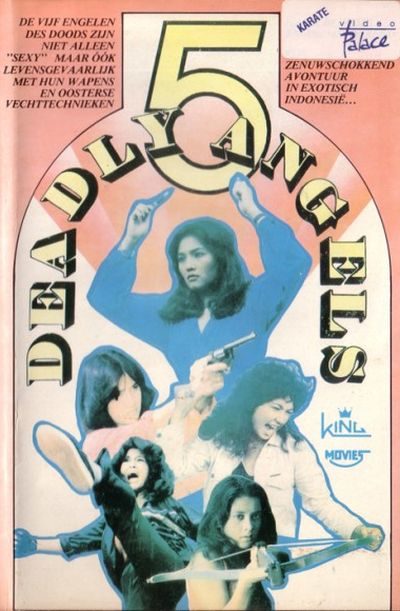 Difficult though it is to believe, a film containing the remarkable line of dialogue above still manages, largely, to be dull and uninteresting. Charlie’s Angels has a lot to answer for, spawning a slew of knock-offs and imitators as a result of its success, all over the world. In this case, the origin is Indonesia, where scientist Hardy has just discovered a new kind of super-explosive. He’s worried about it falling into the wrong hands, and rightfully so, as he and girlfriend Yanti (Octavia) are kidnapped by the evil Mr. Brutho. Yanti is able to escape, although Brutho – who goes through minions like the rest of us go through socks – plans to kidnap her mother and little sister. The aim is to use them as leverage (which is where we get the tag-line) and force Hardy to make his new explosive, for sale to a Middle Eastern potentate.
Difficult though it is to believe, a film containing the remarkable line of dialogue above still manages, largely, to be dull and uninteresting. Charlie’s Angels has a lot to answer for, spawning a slew of knock-offs and imitators as a result of its success, all over the world. In this case, the origin is Indonesia, where scientist Hardy has just discovered a new kind of super-explosive. He’s worried about it falling into the wrong hands, and rightfully so, as he and girlfriend Yanti (Octavia) are kidnapped by the evil Mr. Brutho. Yanti is able to escape, although Brutho – who goes through minions like the rest of us go through socks – plans to kidnap her mother and little sister. The aim is to use them as leverage (which is where we get the tag-line) and force Hardy to make his new explosive, for sale to a Middle Eastern potentate. Kozue (Yokoyama) and her younger sister Akane (Momomiya) are driving through the countryside when their car breaks down, near a closed camp-ground. Closed – but, unfortunately for them, not deserted. The well-mannered young man whom they first encounter turns out to be a lure, who brings the two women into the grasp of a pack of psychopaths. The nicknames these weirdos have, largely sum up the extreme peril of the situation for the siblings: Hypo, Pyro, Copro, Necro and Thanatos. It turns out they were all pals during an enforced stay in a nearby mental hospital. When that shut down suddenly (in a way explained later on), they opted to hang around, forming some kind of sexually-deviant collective. Kozue and Akane pretty much represent a theme-park for these perverts.
Kozue (Yokoyama) and her younger sister Akane (Momomiya) are driving through the countryside when their car breaks down, near a closed camp-ground. Closed – but, unfortunately for them, not deserted. The well-mannered young man whom they first encounter turns out to be a lure, who brings the two women into the grasp of a pack of psychopaths. The nicknames these weirdos have, largely sum up the extreme peril of the situation for the siblings: Hypo, Pyro, Copro, Necro and Thanatos. It turns out they were all pals during an enforced stay in a nearby mental hospital. When that shut down suddenly (in a way explained later on), they opted to hang around, forming some kind of sexually-deviant collective. Kozue and Akane pretty much represent a theme-park for these perverts.